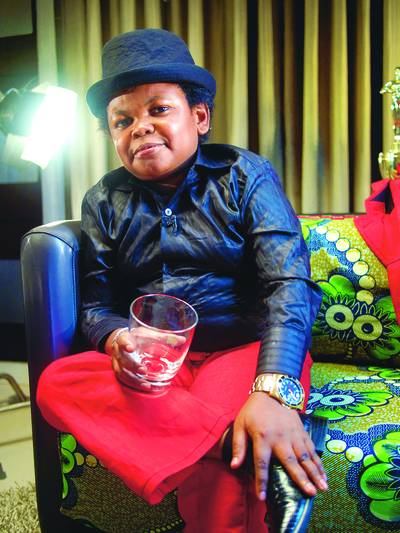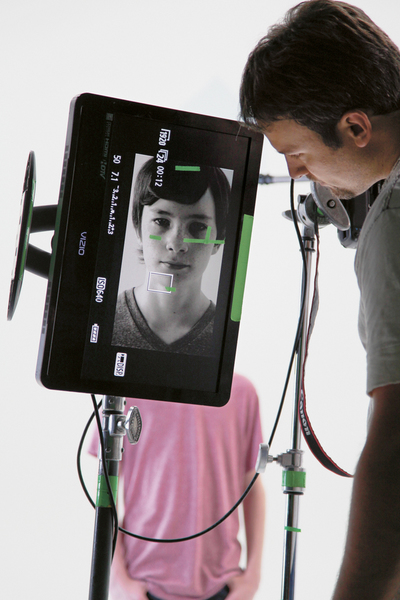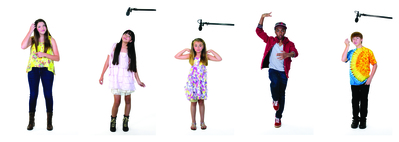A Dark Trip Into the Woods
by Debra Cash
A child can easily get lost in the woods: Hollywood in Los Angeles, Bollywood in Mumbai and Nollywood in Lagos. These international centers of the commercial film industry are places of enchantment and aspiration. For the young people who enter these realms in pursuit of fame, they can turn into ominous settings that impose a constricted range of “authentic” childhood behavior and identity.
Video artist Candice Breitz is concerned with the social distortions of international consumer media culture and the way it plays out in visual imagination. Born in Johannesburg, trained in the United States, and based in Berlin since 2002, she is a global citizen. Trevor Smith, the Peabody Essex Museum’s first contemporary art curator, tapped Breitz as the eighth artist to participate in its ambitious FreePort contemporary art initiative. Smith describes FreePort works as addressing “the crossovers of cultures, disciplines and technology. If Charles Sandison, our first FreePort artist, found inspiration for his projections in the ships’ logs and sailors’ journals from the 18th and 19th centuries that were collected by the museum over the years, Candice found inspiration outside the collection itself, in the global range of contemporary film industries.”
Smith first met Breitz at the 1997 Johannesburg Biennale but says they got to know each other better in 2001 when she presented Four Duets at the Tapei Biennial, one of her early deconstructions of pop culture in a multichannel installation. He went on to select her two-channel work, Factum (2010), a look at identity through interviews with seven sets of identically-dressed twins and one set of triplets, for the Singapore Biennale Open House.
PEM co-commissioned The Woods with the Australian Centre for the Moving Image (ACMI) in Melbourne. Both institutions contributed production funding to the project, and each will share an edition of the work in their collections.
The Woods is comprised of three video installations: The Audition, shot in Hollywood; The Rehearsal, shot in Mumbai; and The Interview, shot in Lagos. The three videos took almost four years to complete.
For The Audition, Breitz took out an ad in the trade journal Backstage to recruit child actors between 10 and 17 years old. She specified that respondents had to have familiarity with casting calls and warned against first-timers. Casting was finalized over Skype from Berlin.
The 25 young people who assembled on a Woodland Hills soundstage went through the paces of a standard screen test, standing for front-facing and side-facing poses before a blank “infinity” screen. Breitz had each of them deliver lines from a script based on verbatim transcripts of motivational videos providing advice to aspiring child actors and their parents. The content is dismaying, and the documentation of their efforts is worse: the kids do bad accents and dance hip hop, sing songs of their own composition and play with their hair in the manner of distracted, sit-com daughters. Their 15 minutes of on-camera fame demonstrate exactly the problem of this craving. Even if these kids never book another screen test, they are, by virtue of this video, spotlighted in international museum collections. It’s hard to tell if Breitz’s critique is part of the problem or part of the solution.
For The Rehearsal, Breitz brought together six seasoned Bollywood child stars who had already grabbed the brass ring. Wearing clothing ranging from school pinafores to red carpet-ready saris, each young actor was videotaped during junket-style interviews in a lavishly appointed hotel room. The script is made of quotes stitched together from interviews with adult Bollywood superstar Shah Rukh Khan. It’s dizzying to hear these earnest kids declare, one by one “do I have what it takes to be just me in front of the camera” when you know that they’re reading someone else’s lines.
The Interview turns these aspirational stories on their heads in a two-channel interview with Chinedu Ikedieze (Aki) and Osita Iheme (Pawpaw), Nigerian adults with dwarfism who have famously played the roles of children in nearly 100 low-budget films aimed at the huge African market. Like their idol, the late Gary Coleman of the American television series Diff’rent Strokes, they have been able to simulate childhood long into adulthood. (In fact, they were threatened with a ban from playing adult roles lest they be seen as bad examples.) Ikedieze and Iheme’s comments, made separately and juxtaposed as if they were seated before a row of trophies at the opposite edges of a brightly patterned sofa, show a keen awareness of the cinematic norms of “childlike” mischief that they are more than ready to represent, noting that an adult playing a child is likely to be more reliable, and even more believable, than an actual child.
When authenticity is simply another word for what sells, childhood itself is up for grabs. Candice Breitz’s look at the boys and girls who would be stars demonstrates that The Woods are indeed lovely, deep, and very dark.
Candice Breitz: The Woods
Through March 1, 2015
Peabody Essex Museum
Salem, MA
www.pem.org
________________________________________________________________________________________________
Image Credit: Photos by Aderemi Adegbite, Johanna Breiding and Mary Rasmussen. All images from the trilogy The Woods.
________________________________________________________________________________________________
Debra Cash is a senior contributor to ArtsFuse.org, scholar in residence at the Bates Dance Festival and a longtime writer and speaker on performing, visual and literary arts.




